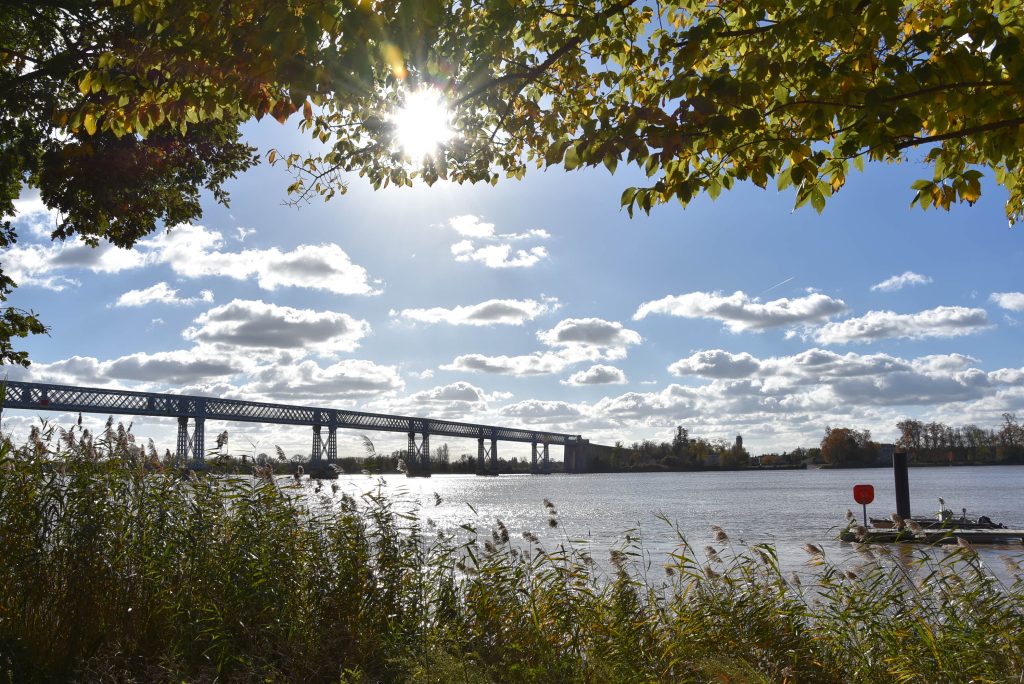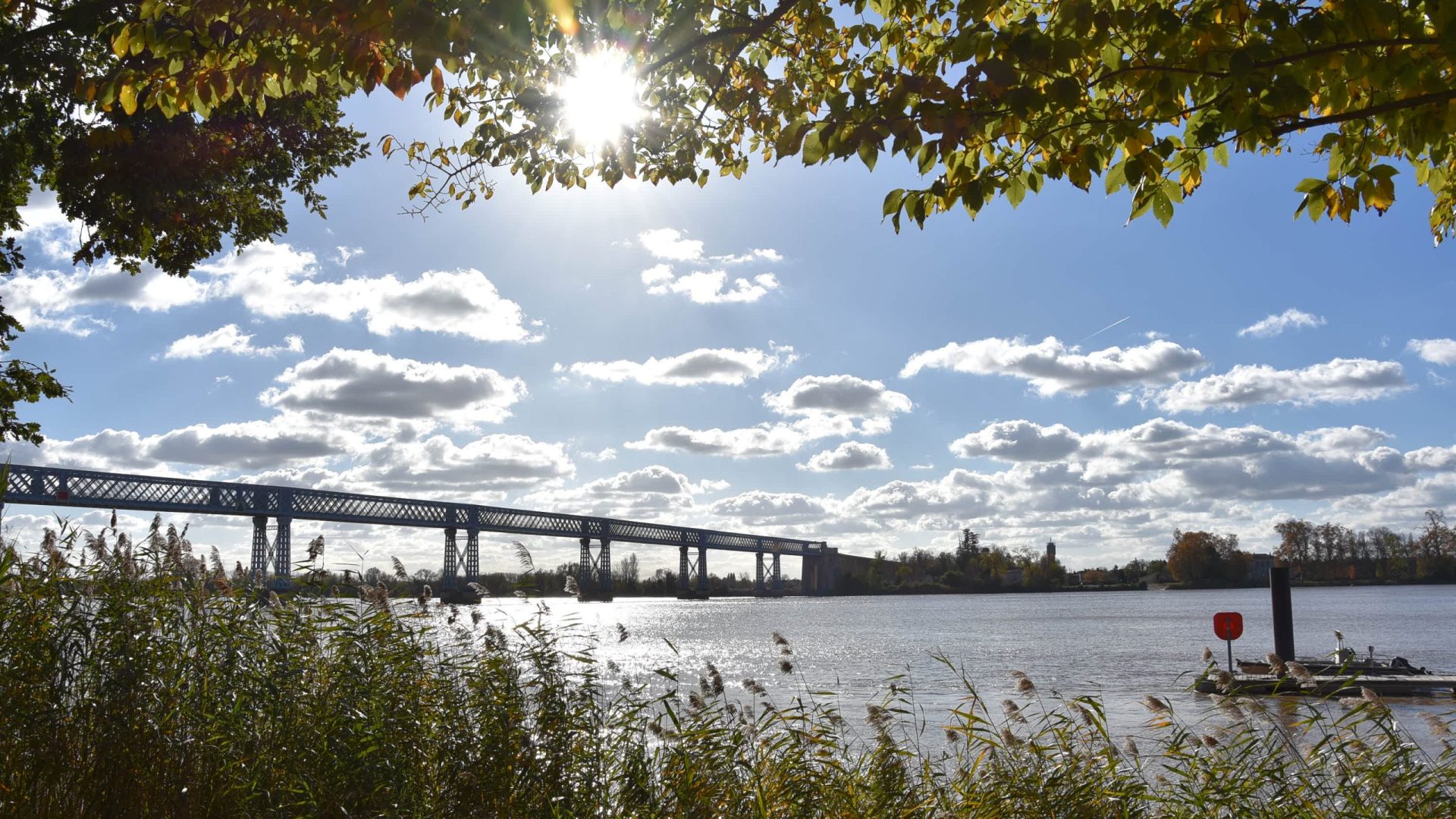This road bridge was built by Gustave Eiffel, between 1879 and 1883, on the foundations of a first suspension bridge (1839-1869) swept away by a storm. Destroyed during the Second World War, it was rebuilt by his grandson. The access ramp is supported by stone arcades which, seen from below, have the appearance of a Gothic cathedral.



A little history…
The Cubzac Bridge is a perfect example of the industrial era of the 19th century in France. If its history is rather recent (construction 1839-1883, then reconstruction in 1946 after being dynamited) you should know that already at the time of the Romans the crossings on the Dordogne were made in Cubzac.
A word about Gustave Eiffel
A specialist in metal constructions, Eiffel left the Central School of Arts and Manufactures at the age of 23 and his first job was for the Nepveu company, a railway equipment manufacturer where he was immediately confronted with the problems posed by metal constructions. He participated in numerous projects and quickly became a reference. In the 1860s, he set out on his own by founding his metal construction establishment which would become the “Société de constructions Levallois-Perret”. He surrounds himself with competent and talented technicians and produces parts in series.
What is the Eiffel method?
These are solid but also aesthetic metal constructions. Gustave Eiffel applies a cantilever assembly method which avoids the cost of scaffolding. Eiffel invented the lever process which consists of directly operating the rollers on which the bridge rests, so as to eliminate any tendency for the piers to overturn during progression. These rollers are carried by rocker frames to distribute the pressure evenly. The mastery of his compressed air foundation technique was one of the elements of his business which enabled him to win numerous international calls for tenders including the Eiffel Tower.
He then undertook works such as the Statue of Liberty and the Eiffel Tower.




